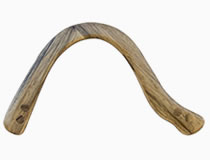What is considered manual manufacturing? On the web, you can often find products marked as handmade goods. Often, the "manual part" of the manufacturing process is to transfer the workpiece from one automatic machine to another, then to a third. This is where the "manual" ends. There are often products marked as "handmade", and in fact there are several complex parts made on automated machines that need to be connected as in the famous LEGO constructor, perhaps even by hand, and this is called handmade.
It is impossible not to agree that in woodworking and the manufacture of more or less complex products it is impossible to do without the use of tools, and we can say that the manufacture is always only partially manual, somewhere more, somewhere less. In general, the concept is blurry. For example, the jointing of the board with a manual plane or in a planer machine. In both cases, a tool is used. However, processing with a plane, perhaps, is much more "manual" work than using a reismus.
As for our boomerang manufacturing process, to a greater extent, it is handmade. This allows you to create unique products of its kind, improvise with shapes and characteristics. So, for example, giving the workpiece an aerodynamic profile and subsequent grinding requires a large amount of manual labor. This also includes the creation of decorative elements of the boomerang itself and the necessary customization.
From the point of view of commerce, the use of a large amount of manual labor is not profitable. In an effort to preserve the inherent originality of the boomerang, we use only the minimum necessary templates, develop new shapes and improvise with textures. Thus, we create a really valuable, collectible item that stands out for its originality.



